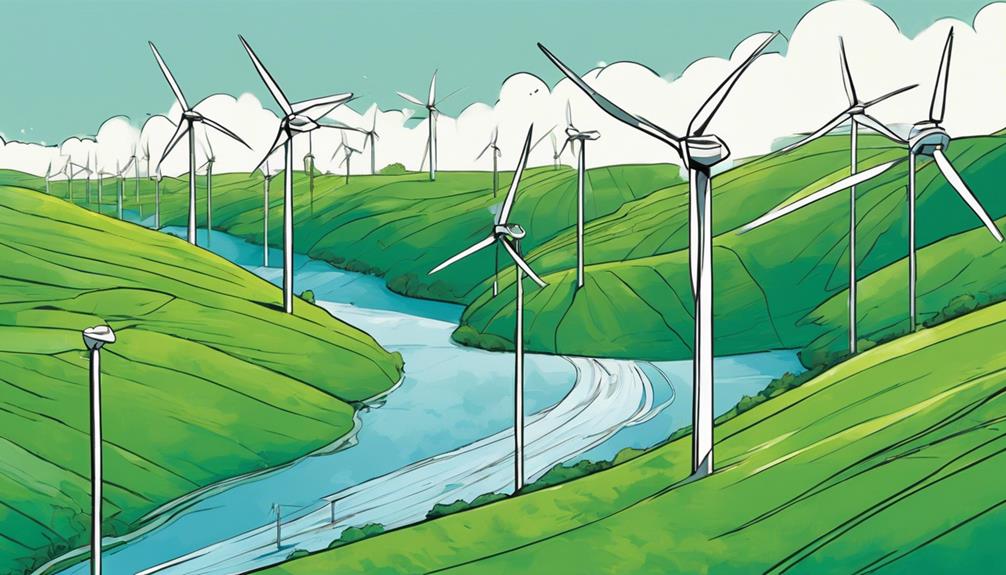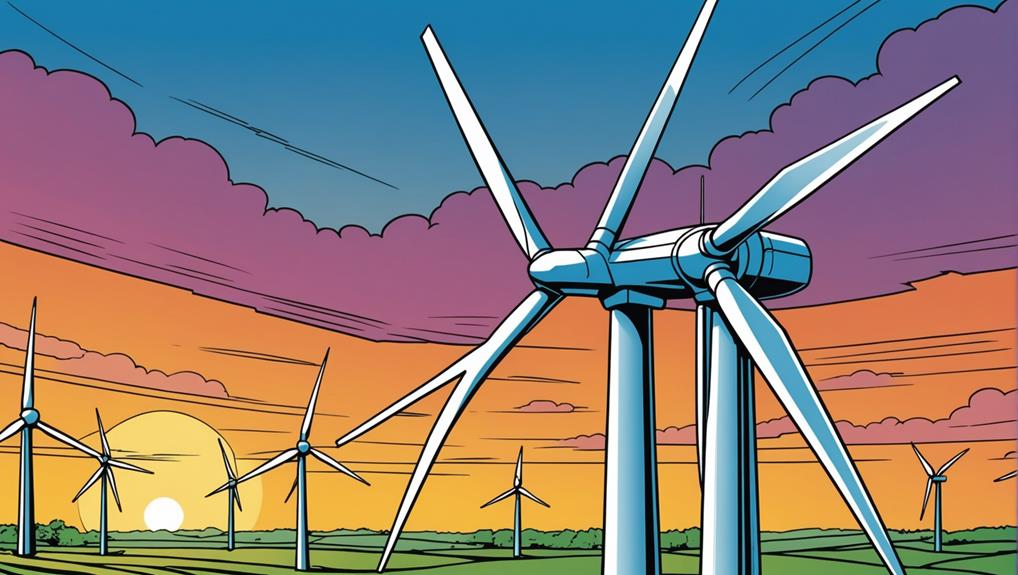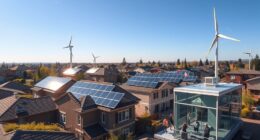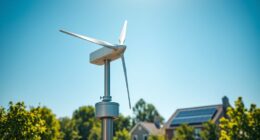I'm taking the DIY approach to renewable energy and building my own wind turbine to harness the power of wind and reduce my reliance on fossil fuels. I've learned that wind energy reduces our reliance on fossil fuels, promotes energy independence, creates jobs, and generates clean and renewable energy – all while being cost-effective. To get started, I need to design efficient turbine blades, build a sturdy tower, assemble the components, and plan for ongoing maintenance. With the right guidance, I can successfully construct my own wind turbine and start reaping the benefits – let's delve into the details and make it happen.
Key Takeaways
- Design turbine blades with a curved, tapered shape and gradual twist distribution to maximize energy capture and reduce drag.
- Build a sturdy turbine tower with a secure concrete foundation, anchored with guy wires for stability and wind exposure.
- Assemble turbine components, including the generator, blades, yaw mechanism, control system, and electrical system, following manufacturer's instructions.
- Perform routine maintenance tasks, such as monthly visual checks, lubrication, and bolt tightening, to ensure optimal performance and longevity.
- Consider the benefits of wind energy, including reduced reliance on fossil fuels, energy independence, and cost-effectiveness, when constructing your own wind turbine.
Benefits of Wind Energy
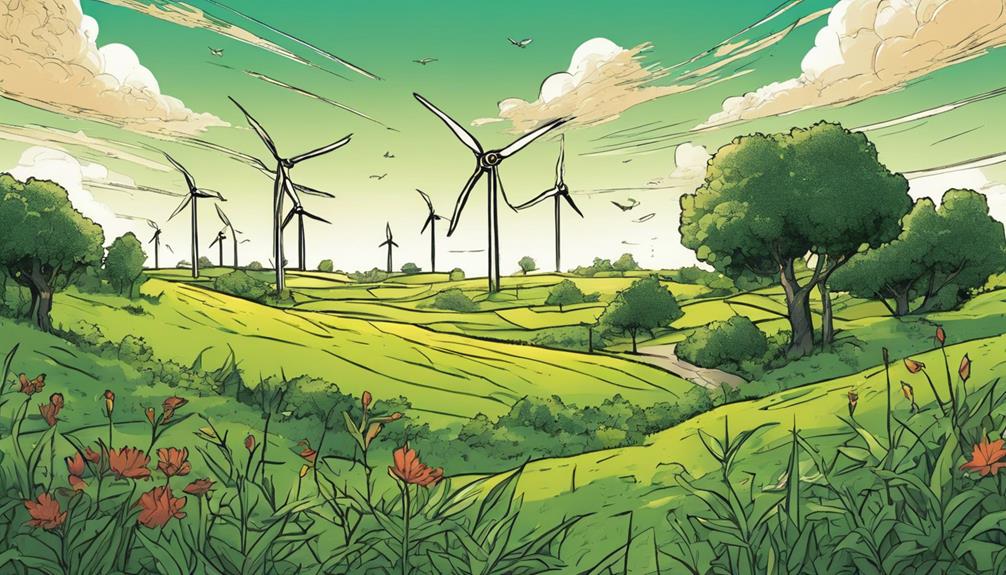
As I explore the world of wind energy, I'm struck by the numerous benefits it offers, from reducing my reliance on fossil fuels to promoting energy independence and creating jobs in the process.
By harnessing the power of wind, I can generate clean and renewable energy, reducing my carbon footprint and contributing to a sustainable future.
Additionally, wind energy is cost-effective, making it an attractive option for homeowners and businesses alike. The job creation potential is also significant, with opportunities in manufacturing, installation, and maintenance.
Designing the Turbine Blades

As I progress with constructing my own wind turbine, designing the turbine blades is a vital step that demands careful attention to optimize energy conversion and turbine efficiency. The blade's shape, length, and material all play an essential role in harnessing wind energy. I must consider factors like twist distribution, airfoil cross-section, and tip shape to guarantee maximum energy conversion.
| Blade Feature | Optimal Design | Benefits |
|---|---|---|
| Shape | Curved, tapered | Maximizes energy capture |
| Length | 2-5 meters | Balances efficiency and cost |
| Material | Fiberglass or carbon fiber | Lightweight, durable, and corrosion-resistant |
| Twist Distribution | Gradual, consistent | Reduces drag, increases efficiency |
| Tip Shape | Rounded, aerodynamic | Minimizes noise, vibration |
Building the Turbine Tower

With the turbine blades designed, I now focus on constructing a sturdy tower to support the entire structure, guaranteeing it can withstand various weather conditions and maximize energy generation.
I choose a location with good wind exposure and ample space for the tower and base. Next, I prepare a secure foundation by pouring concrete into a dug hole for stability.
Then, I assemble the tower sections following the manufacturer's instructions and anchor it with guy wires. This secures the tower remains upright and stable, even in strong winds.
A well-built tower is essential for the turbine's performance and longevity, so I take my time to get it right.
Assembling the Turbine Components
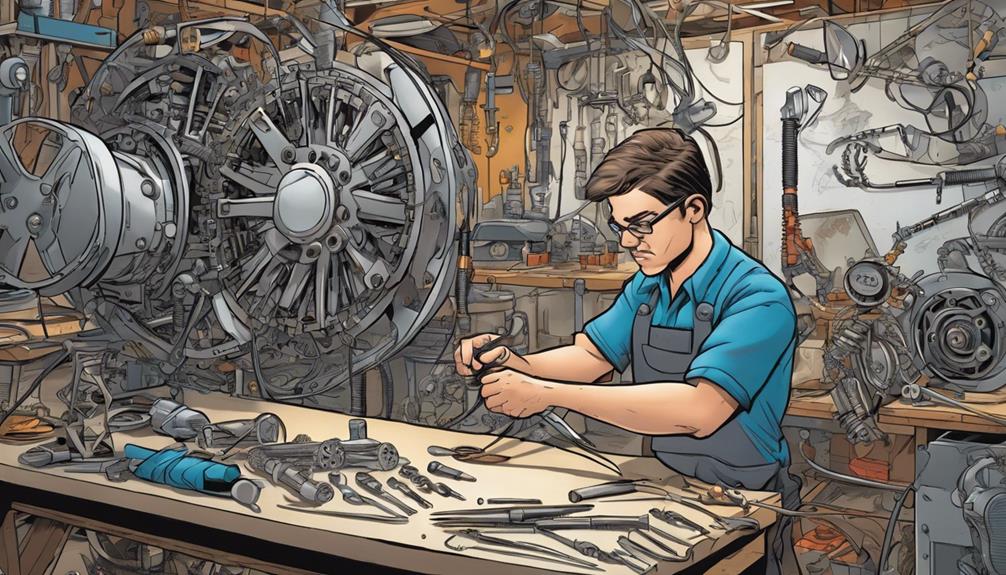
I carefully attach the turbine's generator to the hub, ensuring a secure connection to convert the mechanical energy of the rotating blades into electrical energy.
Next, I connect the blades to the hub, making sure they're evenly spaced and properly aligned.
I then attach the yaw mechanism, which allows the turbine to rotate and face the changing wind direction.
After that, I install the control system, which regulates the turbine's speed and direction.
Finally, I connect the electrical system, ensuring the turbine is safely and efficiently generating power.
Throughout the assembly process, I follow the manufacturer's instructions and take necessary safety precautions to avoid any mistakes or accidents.
Ongoing Maintenance Tasks
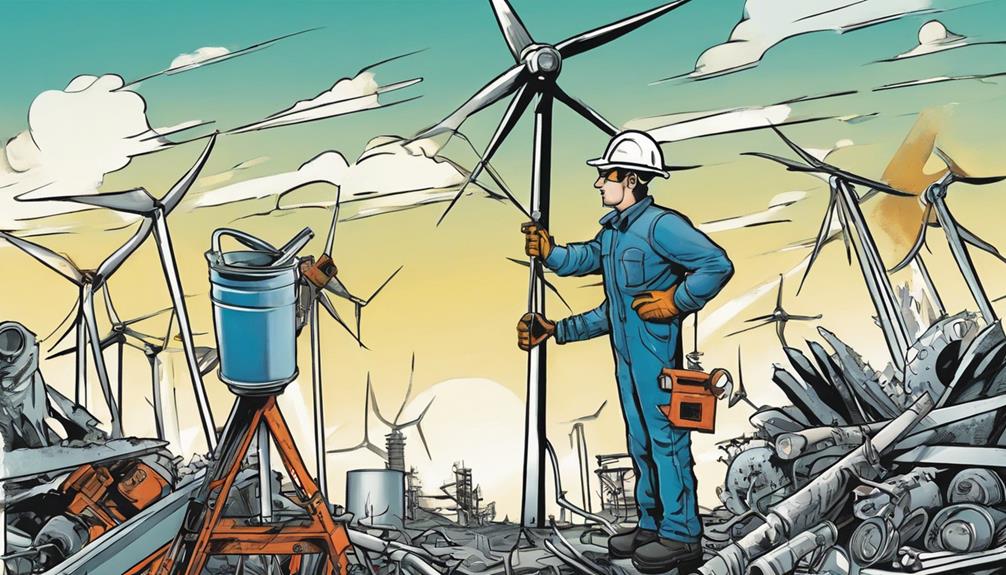
Regular maintenance checks help uncover potential issues before they become major problems, guaranteeing the wind turbine operates efficiently and safely over its lifespan.
As the turbine's owner, it's my responsibility to perform routine inspections and tasks to prevent breakdowns. I schedule monthly visual checks of the blades and tower to identify any signs of wear or damage.
Every six months, I lubricate moving parts to keep them running smoothly. Annually, I tighten bolts to maintain the turbine's structural integrity.
Frequently Asked Questions
What Are the Safety Precautions When Working With Electrical Components?
'When working with electrical components, I always make sure I'm well-grounded, wear protective gear like gloves and goggles, and follow proper lockout/tagout procedures to prevent shocks and electrical fires.'
Can I Use Recycled Materials for Building My Wind Turbine?
"Building a wind turbine is like piecing together a puzzle, and using recycled materials is a clever move. Yes, I can repurpose old materials, like reclaimed wood or repurposed metal, to construct my turbine, reducing waste and costs."
How Do I Obtain Necessary Permits and Licenses for Installation?
Before installing my wind turbine, I need to obtain necessary permits and licenses from local authorities, ensuring compliance with zoning laws, environmental regulations, and electrical safety standards.
What Is the Ideal Distance Between Wind Turbines for Optimal Energy Generation?
"As I gaze out at the windswept landscape, I ponder the perfect spacing. Ideally, turbines should be placed 5-10 times their rotor diameter apart, allowing winds to recharge and maximizing energy harvest."
Can I Integrate My Wind Turbine With Existing Solar Panel Systems?
Yeah, I can definitely integrate my wind turbine with existing solar panel systems. By combining both, I'll maximize energy generation and reduce reliance on fossil fuels, making my home even more sustainable.
Does the Construction of a Wind Turbine Require a Significant Amount of Oil?
The construction of a wind turbine does not require a significant amount of oil. In fact, the oil consumption in wind turbines is minimal compared to the amount used in traditional energy production. Wind energy is considered a clean and sustainable alternative to fossil fuels, making it an environmentally friendly choice.
Conclusion
As I stand back to admire my handiwork, the gentle hum of my homemade wind turbine whispers sweet nothings of sustainability and self-sufficiency. It's a beacon of hope, a proof of the power of innovation and determination.
With every rotation, I'm reminded that the winds of change are in my hands – and now, they can be in yours too.

